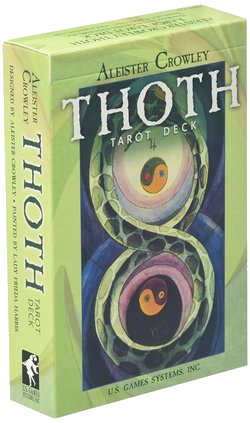You will see each of the 5 groups listed with links to the Thoth Tarot meanings for both upright and reversed choices.
|
|
The deck of cards known as the Thoth Tarot is divided into two parts: the Major Arcana and the Minor Arcana. The Major Arcana consists of 22 cards. The Minor Arcana is a combination of four suits; each suit is comprised of cards numbered from one to ten, plus court cards of Princess, Prince, Queen and Knight. The four suits of the Minor Arcana are Cups, Disks, Wands and Swords. Each suit of the Minor Arcana has a meaning. Traditionally the swords indicate ill fortune or difficulties, the disks indicate financial and material success, the cups indicate good fortune and love and the wands indicate enterprise and knowledge. Crowley was not the one who reversed cards 8 and 11 (Justice and Strength). If you look at old historical decks, Justice has been the 8 ever since.
The Major Arcana for the Thoth Tarot Deck differ thus:
Basic Meaning of Reversed Cards
- Inability to see the way forward
- Unable to understand the situation
- Delays and setbacks
- Unable to come to terms with the situation
- Paired with an upright card, a moderating influence
- Suggestive of life lessons needing to be relearned, related to the previous card
- Sometimes the total reverse of the upright.
To develop your reading abilities, you need to find a tarot deck that has meaning for you. When you have a connection with your tarot deck, the readings that you give will be much more accurate.
The Major Arcana – meanings upright and reversed

- 00-The Fool Thoth Tarot Meanings
- 01-The Magus Thoth Tarot Meanings
- 02-The Priestess Thoth Tarot Meanings
- 03-The Empress Thoth Tarot Meanings
- 04-The Emperor Thoth Tarot Meanings
- 05-The Hierophant Thoth Tarot Meanings
- 06-The Lovers Thoth Tarot Meanings
- 07-The Chariot Thoth Tarot Meanings
- 08-Adjustment Thoth Tarot Meanings
- 09-The Hermit Thoth Tarot Meanings
- 10-Fortune Thoth Tarot Meanings
- 11-Lust or Strength Thoth Tarot Meanings
- 12-The Hanged Man Thoth Tarot Meanings
- 13-Death Thoth Tarot Meanings
- 14-Art Thoth Tarot Meanings
- 15-The Devil Thoth Tarot Meanings
- 16-The Tower Thoth Tarot Meanings
- 17-The Star Thoth Tarot Meanings
- 18-The Moon Thoth Tarot Meanings
- 19-The Sun Thoth Tarot Meanings
- 20-The Aeon Thoth Tarot Meanings
- 21-The Universe Thoth Tarot Meanings
Cups – meanings upright and reversed
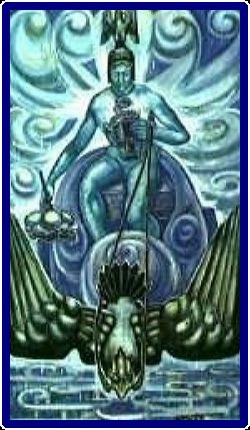
- 36-Ace of Cups Thoth Tarot Meanings
- 37-Two of Cups Thoth Tarot Meanings
- 38-Three of Cups Thoth Tarot Meanings
- 39-Four of Cups Thoth Tarot Meanings
- 40-Five of Cups Thoth Tarot Meanings
- 41-Six of Cups Thoth Tarot Meanings
- 42-Seven of Cups Thoth Tarot Meanings
- 43-Eight of Cups Thoth Tarot Meanings
- 44-Nine of Cups Thoth Tarot Meanings
- 45-Ten of Cups Thoth Tarot Meanings
- 46-Princess of Cups Thoth Tarot Meanings
- 47-Prince of Cups Thoth Tarot Meanings
- 48-Queen of Cups Thoth Tarot Meanings
- 49-Knight of Cups Thoth Tarot Meanings
Swords – meanings upright and reversed
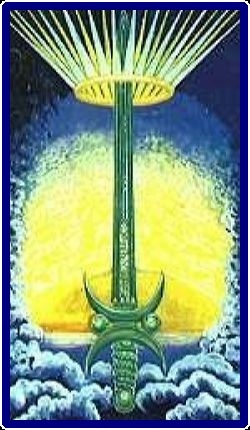
- 50-Ace of Swords Thoth Tarot Meanings
- 51-Two of Swords Thoth Tarot Meanings
- 52-Three of Swords Thoth Tarot Meanings
- 53-Four of Swords Thoth Tarot Meanings
- 54-Five of Swords Thoth Tarot Meanings
- 55-Six of Swords Thoth Tarot Meanings
- 56-Seven of Swords Thoth Tarot Meanings
- 57-Eight of Swords Thoth Tarot Meanings
- 58-Nine of Swords Thoth Tarot Meanings
- 59-Ten of Swords Thoth Tarot Meanings
- 60-Princess of Swords Thoth Tarot Meanings
- 61-Prince of Swords Thoth Tarot Meanings
- 62-Queen of Swords Thoth Tarot Meanings
- 63-Knight of Swords Thoth Tarot Meanings
Disks – meanings upright and reversed
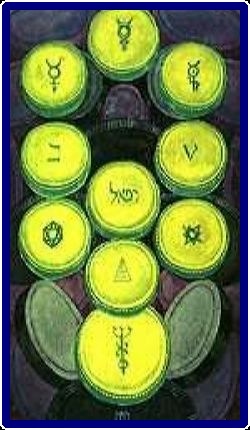
- 64-Ace of Disks Thoth Tarot Meanings
- 65-Two of Disks Thoth Tarot Meanings
- 66-Three of Disks Thoth Tarot Meanings
- 67-Four of Disks Thoth Tarot Meanings
- 68-Five of Disks Thoth Tarot Meanings
- 69-Six of Disks Thoth Tarot Meanings
- 70-Seven of Disks Thoth Tarot Meanings
- 71-Eight of Disks Thoth Tarot Meanings
- 72-Nine of Disks Thoth Tarot Meanings
- 73-Ten of Disks Thoth Tarot Meanings
- 74-Princess of Disks Thoth Tarot Meanings
- 75-Prince of Disks Thoth Tarot Meanings
- 76-Queen of Disks Thoth Tarot Meanings
- 77-Knight of Disks Thoth Tarot Meanings
Meaning of Wands – meanings upright and reversed
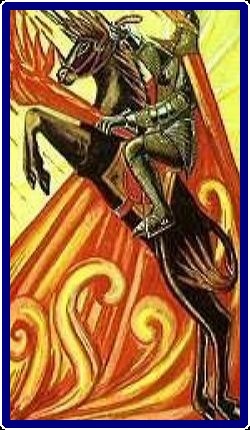
- 22-Ace of Wands Thoth Tarot Meanings
- 23-Two of Wands Thoth Tarot Meanings
- 24-Three of Wands Thoth Tarot Meanings
- 25-Four of Wands Thoth Tarot Meanings
- 26-Five of Wands Thoth Tarot Meanings
- 27-Six of Wands Thoth Tarot Meanings
- 28-Seven of Wands Thoth Tarot Meanings
- 29-Eight of Wands Thoth Tarot Meanings
- 30-Nine of Wands Thoth Tarot Meanings
- 31-Ten of Wands Thoth Tarot Meanings
- 32-Princess of Wands Thoth Tarot Meanings
- 33-Prince of Wands Thoth Tarot Meanings
- 34-Queen of Wands Thoth Tarot Meanings
- 35-Knight of Wands Thoth Tarot Meanings
Here are some snippets from a few of my favorite books
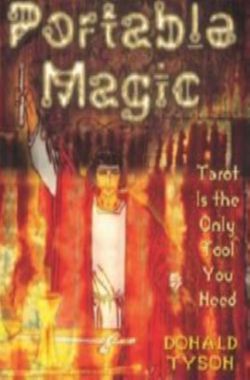
Portable Magic: to playing cards, but it has often been mistakenly assumed that the references were to Tarot cards, because until quite recently it was thought that the Tarot was older than common cards. The belief was that common cards had descended from the Tarot, whereas we now know that it was the other way around the Tarot was based in part on playing cards, which were already in widespread use when it was invented.
Complete Book of Tarot: Mathers (1888): Riches, fortune, opulence, magnificence, grandeur; (R) surprise, astonishment, event, extraordinary occurrence.
Psychic World: The deck of cards known as the tarot is divided into two parts: the Major Arcana and the Minor Arcana. The word arcana’ is from the Latin word for secret. The Major Arcana consists of 22 cards, each separately titled. These cards depict symbolic figures, such as the Fool, the Magician, the High Priestess and the Empress, elements of nature such as the Star, the Moon and the Sun, and human experiences on the spiritual journey as well as joys, hopes, fears and sorrows. The symbols are universal, drawn from legend and from magical belief. Typically the Major Arcana cards are subject to broad interpretations. In essence they are archetypes and their sequence from 0 to 21 is believed to represent the soul’s journey to awareness, the process of becoming whole or the alchemical process of spiritual transformation. Some have equated the Major Arcana with the 22 letters of the Hebrew alphabet and work them with the Kabbalah’s Tree of Life.
- Do get in touch if you looked for Thoth Tarot Deck and we don’t have it listed. We would be more than happy to source the information for you. We hope you visit again for more online tarot information!
Complete Book of Tarot: This exquisite deck was owned by the Venier family of Venice. Most likely produced around 1491 by artist Nicola di Maestro Antonio, the Sola-Busca deck consists of seventy-eight cards and is unique in that each card is illustrated with characters based on figures of classical antiquity. Some authors believe that the symbolism of this deck derives from alchemical theories about transforming base metals into gold. The practice of illustrating each of the seventy-eight tarot cards with a unique scene or character would not be repeated until Pamela Colman Smith painted the now famous Rider-Waite-Smith deck in 1909.
